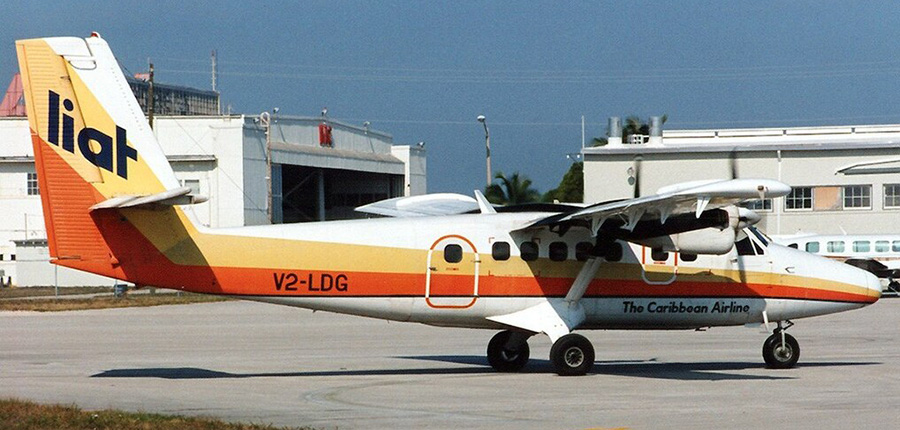The first and only time I’ve been on an aircraft that ran out of fuel was in a Twin Otter.
At least I hope it’s the only time. Don’t want to tempt fate.
If you’ve spent any time at all in the bush (giggety), then you may have had an encounter with the de Havilland Canada DHC-6 Twin Otter. It’s a rugged little beast, designed for short takeoff and landing. De Havilland produced nearly a thousand of them from 1966 to 1988, and many of those planes are still in operation throughout the world. They could be sent straight out of the factory with floats, with skis or with a set of three-wheeled landing gear.
Before the volcano
I was in one of the latter, traveling on a Leeward Islands Air Transat (LIAT) flight with my family. It was the late 80s, and we were ‘puddle jumping’ from Antigua to Montserrat, years before the Soufriere erupted. We’d just taken off and got up to a cruising altitude, which was under 10,000 feet, as the Twin Otter had a non-pressurized cabin.
I was sitting in the aisle; my vantage let me see into the cockpit, where I the pilot and copilot were talking animatedly, tapping some indicator lights. There were four of them and three of them were lit. I leaned over and asked my Dad, who spent a lot of time flying in these planes: “Hey what are those lights?”
“Oh, they?re the fuel indicator lights.”
The plane was already banking when the fourth light came on.
Out of gas
Yep, we’d run out of fuel. Or we were about to. Luckily, they’d noticed early enough into the flight that we could turn back to Antigua and so, we wouldn’t have to ditch in the Atlantic. Not so good without floats. In fact, probably pretty dangerous. You’ll note in the picture the door sits under the wings, so even if the pilots managed to land in the choppy ocean, you?d have to hold your breath to get out of the cabin.*
But at least we were going to make it back to land. The runway was in sight!
Then the reserves ran out. The engine coughed a few times, and then, the propellers stopped doing their thing. So, yes, we were going to make it back to land, but would we crash on it, like a blue whale meeting its new best friend?
The sounds of silence
The wind whistled eerily, as the wings worked the way they’re supposed to, and kept us in the air. That’s the only noise I remember. Nobody was crying, or screaming, or even praying. Just silence in the cabin and the whisper of the air pressure on the bottom of the wings, keeping us aloft.
But we were descending. Probably faster than the pilot wanted. But he was a canny flyer. We touched down on the runway at the far end. Even then, there were no cheers, because we had to stop and there was no fuel to reverse the props and slow us down. It wasn’t that long an airstrip.
But long enough. When the plane came to a halt, not too far from the airport, then we cheered. We piled out of the plane, shaken. Happy to be alive. My brother and my father stayed to watch them refuel the Twin Otter.
My mother and I were much more sensible. We marched to the airport bar and fortified ourselves for the next attempt at the puddle.
#
*I should probably mention that in 1986, LIAT Flight 319, flying from St. Lucia to St. Vincent went down in a storm, and no bodies or wreckage were recovered.
Photo Credit: JetPix (GFDL 1.2 or GFDL 1.2), via Wikimedia Commons
Get a free ebook!
If you’d like to check out one of my previous novels, before you buy, I’m happy to just give you one. Not only that, you can choose between Marvellous Hairy and The Fridgularity. (They’re both great in their own ways.) Just join my newsletter to get started!

